News
Toxic Chemicals May Weaken Infants' Response to TB Vaccine
Friday, December 18, 2015
Exposure to toxic chemicals while in the womb or in early life may weaken a baby's immune system response to the tuberculosis (TB) vaccine, researchers say.
The study focused on two common toxins: PCBs, an industrial chemical; and DDT, used in pesticides. These so-called "persistent" pollutants are not easily broken down and remain a health threat years after being banned.
PCBs were banned in the United States in 1979. DDT is banned in the United States, but is still used in some countries to control malaria-carrying mosquitoes, the study authors, from the University of Rochester in New York, said in a university news release.
"There are thousands of pollutants similar to PCBs and DDT with unknown health implications," study leader Dr. Todd Jusko, assistant professor in the departments of environmental medicine and public health services, said in the news release. "Our work provides a foundation for how these types of chemicals affect the developing immune system in infants around the world."
Exposure to chemicals lowers babies' TB vaccine response
Wednesday, December 9, 2015
Fetal exposure to two chemicals -- polychlorinated biphenyls, or PCBs, and DDE, a product of the breakdown of the insecticide DDT -- can dampen infants' immune response to the tuberculosis vaccine, according to a new study of mothers and children.
Both chemicals have been banned in many countries, including the United States, but are considered persistent pollutants, which pose health risks long after being introduced into the environment, can accumulate. The effects of such pollutants can pass between species through the food chain.
PCBs were used in manufacturing and consumer products in the United States until 1979, but most people have detectable PCB concentrations in their blood. DDT was banned in the United States in 1972, though many countries still use it to control the spread of malaria by mosquitoes.
There are thousands of pollutants similar to PCBs and DDT with unknown health implications,
said Dr. Todd Jusko, an assistant professor at the University of Rochester, in a press release.
B&B Professor Harold Smith and Oyagen's Drug Development Highlighted on Local TV for World Aids Day
Friday, December 4, 2015
OyaGen, a small medical research firm off Jefferson Road in Henrietta, has used federal grants for its HIV drug discovery programs with the goal of finding a cure. Dr. Harold Smith, Professor of Biochemistry & Biophysics at the University of Rochester, and the company's founder, president and CEO got his start as a molecular biologist studying heart disease.
"It became clear to me that the things we were doing to study heart disease and find out why things were happening translated directly into the HIV research arena," Smith said.
By 2010, things kicked into high gear. Advanced robotics were added allowing scientists to work with advanced chemistries. They've now identified a weak point in the HIV virus that's never been exploited before. Vif is a viral defense HIV releases into cells it infects. It destroys the body's natural defense against infections. OyaGen discovered a way to defeat HIV by disabling Vif.
"If we can proceed along track, we will be looking at entering clinical trials within a completely different way of approaching the virus and the disease within three years," Smith said.
Gloria Culver to Be Installed as Dean
Tuesday, December 1, 2015
Former Biochemistry graduate student and current Chair of Biology, Dr. Gloria Culver, will be formally installed as dean of the School of Arts & Sciences during an investiture ceremony at 4 p.m. today in the Interfaith Chapel on the River Campus.
University Trustee Ani Gabrellian ’84 will provide opening remarks, followed by words from Provost Peter Lennie, the Robert L. and Mary L. Sproull Dean of the Faculty of Arts, Sciences & Engineering. Mariette Westermann, vice president of the Andrew W. Mellon Foundation, and Jon Lorsch, director of the National Institute of General Medical Sciences, will serve as guest speakers. Following the ceremony, a reception will be held in the Hawkins-Carlson Room of Rush Rhees Library.
Study Provides New Insight on Stem Cell Function
Tuesday, December 1, 2015
Researchers in the Department of Biomedical Genetics have unraveled one of the key molecular mechanisms that regulate stem cell behavior, a discovery that could provide important insight into regenerative medicine and certain forms of cancer.
The study -- led by Benoit Biteau, Ph.D. -- appears in the journal Cell Reports, and was conducted in fruit flies, or drosophila. While diminutive in stature, fruit flies have proven to be an invaluable research tool and have made oversized contributions to medicine, particularly in the fields of molecular biology and genetics.
Benoit and his colleagues focused on a transcription factor called Sox21a which is uniquely found in the stem cells of the drosophila intestine. Transcription factors are proteins that control the expression of genes and, subsequently, help regulate cellular activity. Sox21a is the equivalent of Sox2, a transcription factor found in humans that is known to play an important role in the function of stem cells and cell reprogramming.
Anna Bird Receives Two Awards
Thursday, November 19, 2015
Anna Bird has received the Randy N. Rosier Award for public speaking ($1000 in travel funds received at the URMC CMSR Symposium 2015) and the American Association of Immunologists (AAI) Trainee Abstract Award ($750 in travel funds for AAI New Orleans Conference, 2015).
NASA Grant Will Explore Impact of Space Travel on the Brain
Friday, November 13, 2015
 Kerry O'Banion, M.D., Ph.D., has been awarded $1.8 million from NASA to study whether extended deep space travel places astronauts at risk for neuro-degenerative diseases like Alzheimer's.
Kerry O'Banion, M.D., Ph.D., has been awarded $1.8 million from NASA to study whether extended deep space travel places astronauts at risk for neuro-degenerative diseases like Alzheimer's.
The grant is one of nine announced by NASA that will fund research that employ beams of high-energy, heavy ions simulating space radiation. The studies will be conducted in part at the NASA Space Radiation Laboratory at Brookhaven National Laboratory on Long Island. By colliding matter together at very high speeds, the accelerators at Brookhaven can reproduce the radioactive particles found in space.
The studies will seek to better understand and reduce the risks to humans associated with long journeys in deep space, specifically focusing on neurological and cardiovascular diseases and cancer. Understanding the potential health impact of space travel is a priority for NASA as it develops future plans for maned voyages to Mars and other destinations.
UR Scientist Wins Novo Nordisk Award to Develop Obesity Drug
Wednesday, November 11, 2015

University of Rochester Medical Center researcher Richard P. Phipps, Ph.D., won a top scientific award from the pharmaceutical giant Novo Nordisk, to collaborate on a new obesity therapy based on his laboratory's discoveries.
Phipps, the Wright Family Research Professor of Environmental Medicine, is the first UR faculty to receive the competitive Novo Nordisk Diabetes and Obesity Biologics Science Forum Award. The drug company is providing substantial financial support for the two-year project, which is designed to quickly move basic science in diabetes and obesity to an early stage of drug development known as proof-of-principle.
Phipps discovered a new function for a protein known as Thy1 (formally called CD90), linking it to fat cell accumulation.
Nguyen Mai Wins Poster Competition at 2015 APSA/Tri-Institutional MSTP Conference
Monday, November 9, 2015
Congratulations to Nguyen Mai for winning first place for the poster competition at the 2015 APSA/Tri-Institutional MSTP Conference at SUNY Upstate in Syracuse, NY.
Study: Brain's Immune System Could Be Harnessed to Fight Alzheimer's
Wednesday, November 4, 2015
 A new study appearing in the Journal of Neuroinflammation suggests that the brain's immune system could potentially be harnessed to help clear the amyloid plaques that are a hallmark of Alzheimer's disease.
A new study appearing in the Journal of Neuroinflammation suggests that the brain's immune system could potentially be harnessed to help clear the amyloid plaques that are a hallmark of Alzheimer's disease.
This research confirms earlier observations that, when activated to fight inflammation, the brain's immune system plays a role in the removal of amyloid beta,
said M. Kerry O'Banion, M.D., Ph.D., a professor in the University of Rochester Department of Neurobiology and Anatomy, the Del Monte Neuromedicine Institute, and the lead author of the study. We have also demonstrated that the immune system can be manipulated in a manner that accelerates this process, potentially pointing to a new therapeutic approach to Alzheimer's disease.
The findings are the culmination of years of investigation that were triggered when O'Banion and his colleagues made a surprising discovery while studying mouse models of Alzheimer's disease. They observed that amyloid beta plaques -- which scientists believe play a major role in the disease -- were being cleared in animals with chronic brain inflammation.
Congratulation Fatima Rivera-Escalera
Monday, November 2, 2015
 Fatima has successfully defended her PhD thesis.
Fatima has successfully defended her PhD thesis.
Congratulations Dr. Rivera-Escalera!!!
Congratulations to Monique Mendes, 1st year NGP student!
Friday, October 30, 2015
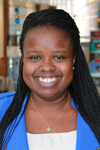 Monique was recognized at the 2014 Annual Biomedical Research Conference for Minority Students (ABRCMS) for an outstanding poster/ oral presentation and was awarded an AHA/ASA Travel Award. This award is given to recognize promising and outstanding investigators in the early stages of their careers, and provide travel assistance to participate in the upcoming 2015 Scientific Sessions.
Scientific Sessions is the American Heart Association's largest gathering of scientists and healthcare professionals devoted to the science of cardiovascular disease and stroke and the care of patients suffering from these diseases. It is the leading cardiovascular meeting in the country with over 17,000 professionals attending annually, and over 22,000 total attendees. Programming for this meeting is designed to improve patient care by communicating the most timely and significant advances in prevention, diagnosis and treatment of cardiovascular disease from many different perspectives. Sessions provides five days of comprehensive, unparalleled education through more than 4,000 presentations given by some of the world's top leaders in the areas of cardiovascular disease, as well as a chance to experience more than 300 exhibitors showcasing the latest cardiovascular technology and resources.
Monique was recognized at the 2014 Annual Biomedical Research Conference for Minority Students (ABRCMS) for an outstanding poster/ oral presentation and was awarded an AHA/ASA Travel Award. This award is given to recognize promising and outstanding investigators in the early stages of their careers, and provide travel assistance to participate in the upcoming 2015 Scientific Sessions.
Scientific Sessions is the American Heart Association's largest gathering of scientists and healthcare professionals devoted to the science of cardiovascular disease and stroke and the care of patients suffering from these diseases. It is the leading cardiovascular meeting in the country with over 17,000 professionals attending annually, and over 22,000 total attendees. Programming for this meeting is designed to improve patient care by communicating the most timely and significant advances in prevention, diagnosis and treatment of cardiovascular disease from many different perspectives. Sessions provides five days of comprehensive, unparalleled education through more than 4,000 presentations given by some of the world's top leaders in the areas of cardiovascular disease, as well as a chance to experience more than 300 exhibitors showcasing the latest cardiovascular technology and resources.
This year's Scientific Sessions will be held November 7th - 11th in Orlando, FL
What We Hear, Even Subconsciously, Fine Tunes Our Sense of Distance
Friday, October 30, 2015
 Most of us at one time or another have counted the seconds between a lightning flash and its thunder to estimate distance. University researcher Duje Tadin and his colleagues have discovered that humans can unconsciously notice and make use of sound delays as short as 40 milliseconds (ms) to fine tune what our eyes see when estimating distances to nearby events.
Most of us at one time or another have counted the seconds between a lightning flash and its thunder to estimate distance. University researcher Duje Tadin and his colleagues have discovered that humans can unconsciously notice and make use of sound delays as short as 40 milliseconds (ms) to fine tune what our eyes see when estimating distances to nearby events.
Much of the world around us is audiovisual,
says Tadin, Associate Professor of Brain and Cognitive Sciences and senior author of the study. Although humans are primarily visual creatures, our research shows that estimating relative distance is more precise when visual cues are supported with corresponding auditory signals. Our brains recognize those signals even when they are separated from visual cues by a time that is too brief to consciously notice.
For the study, published in PLOS ONE, researchers used projected three-dimensional (3D) images to test the human brain's ability to use sound delays to estimate the relative distance of objects.
For the entire story, visit the Univ. Rochester Newscenter.
Lynne Maquat Receives Canada’s Top Prize for Biomedical Research
Thursday, October 29, 2015

On October 29, Dr. Lynne E. Maquat received a 2015 Canada Gairdner International Award, for her work discovering and elucidating the mechanism of mRNA decay pathways. Dr. Maquat was accompanied during presentation of the award by University of Rochester President Joel Seligman, Dean Mark Taubman, and the US Ambassador to Canada, Bruce Heyman (see photo). The sold out annual black tie gala took place at the Royal Ontario Museum in Toronto, Canada and was attended by members of the health care, academic, private and public sectors. Among the attendees were Nobel Laureate Dr. Phillip Sharp, His Excellency the Right Honourable David Johnston, Governor General of Canada, and the Swiss and Japanese Ambassadors to Canada, who accompanied recipients of the Canada Gairdner International Award from those countries.
Leading up to this event, Dr. Maquat visited four local universities where she spoke to high school students about her personal story of how she became interested in research and what she hopes to achieve through her work. She also met with post-docs and graduate students at each university as well as speaking to faculty members about their research. Following the gala, Dr. Maquat attended and spoke at a 2015 Gairdner Symposium RNA and The New Genetics
at the University of Toronto, which she helped coordinate. Her last event occurred at the University of New Brunswick, Fredericton where she once again spoke to high school students On being a Scientist: Uncovering the mysteries of life
and met with post-docs and graduate students about their research. Dr. Maquat took every opportunity to be part of the National Program, where the goal of these programs is to contribute to Canadian science culture and innovation,
and to be part of the Student Outreach Programs where she helped realize one of the Gairdner Foundation's missions to inspire young people to consider a career in science, and to increase their awareness of the value of scientific research.
A local reception was also held to honor Dr. Maquat; pictures available here.
Sigma Xi awards David R. Williams the William Procter Prize for Scientific Achievement
Monday, October 26, 2015
David R. Williams, widely regarded as one of the world’s leading experts on human vision, has been named the recipient of Sigma Xi’s 2015 William Procter Prize for Scientific Achievement. The prize is given annually since 1950 in recognition of outstanding achievement in scientific research and demonstrated ability to communicate the significance of this work to scientists in other disciplines.
Past Procter Prize recipients have included Jane Goodall, Vannevar Bush, Margaret Mead, Murray Gell-Mann, and Rita Colwell.
He will be presented the Procter Prize at an evening ceremony on Saturday, Oct. 24 in Kansas City, during the scientific research society Sigma Xi’s annual meeting.
For the entire article, visit the Rochester NewsCenter.
Clerio Vision Licenses Ground-breaking Approach to Vision Correction Developed by Huxlin, Knox and Ellis
Friday, October 23, 2015
LASIK revolutionized vision correction in the 1990s. Now, a new technology arising from research conducted by Wayne Knox, Professor of Optics and Physics; Krystel Huxlin, Professor of Ophthalmology; and Jonathan Ellis, Assistant Professor of Mechanical Engineering, may do the same, notes UR Ventures Technology Review.
Known as LIRIC
(Laser Induced Refractive Index Change), this ground-breaking method also uses a laser to correct the optical properties of the eye, but that's where the similarities to LASIK end.
The older technology uses two lasers and includes cutting the cornea to create a flap and then pulling that flap back to expose the inner cornea. A laser is then applied to ablate and reshape the corneal tissue to achieve the desired focus. The corneal flap is repositioned and the healing process begins. Complications are rare, but as with any surgery, are a concern. Fear of complications and of having one's eye cut are big reasons why less than 2 percent of people who are eligible for LASIK undergo the procedure.
The LIRIC method uses a laser at a much lower power and does not cut or remove any tissue. Instead, it is a non-invasive procedure that alters the refractive index of the corneal tissue to correct vision. Since the procedure doesn't thin the cornea like LASIK, it may be repeated many times over the course of a patient's lifetime as the eye grows and changes.
This technology has been licensed to Clerio Vision, Inc., a local startup poised to bring this new treatment to market. Clerio was started by a team of entrepreneurs with proven track records - Mikael Totterman (VirtualScopics, iCardiac), Alex Zapesochny (Lenel, iCardiac), Scott Catlin (AMO, Abbott Medical Optics - and now with UR Ventures), and Sasha Latypova (VirtualScopics, iCardiac). The company successfully concluded an oversubscribed Series A round of fundraising with participation from three venture capital firms, and is considering a Series B round to further accelerate product and clinical development. They have proven efficacy in animal models and hydro-gels (contact lenses), and plan to conduct human studies early in 2016.
Taylor Moon and Kyle Koster Receive Awards at Local Meetings
Thursday, October 22, 2015
Congratulations to Taylor Moon and Kyle Koster for their award-winning presentations at two local scientific meetings. Taylor received the "Excellence in Scientific Presentation" award at the Department of Microbiology and Immunology Retreat on October 6th 2015. Kyle received the second place award for his poster at the American Physician Scientists Association Northeast Regional Meeting in Syracuse October 17th 2015. Taylor and Kyle are Microbiology and Immunology doctoral students in the Elliott Lab in the Center for Vaccine Biology and Immunology.
Experimental Treatment Regimen Effective Against HIV
Monday, October 19, 2015
Protease inhibitors are a class of antiviral drugs that are commonly used to treat HIV, the virus that causes AIDS. Scientists at the University of Nebraska Medical Center designed a new delivery system for these drugs that, when coupled with a drug developed at the University of Rochester School of Medicine and Dentistry, rid immune cells of HIV and kept the virus in check for long periods. The results appear in the journal Nanomedicine: Nanotechnology, Biology and Medicine.
While current HIV treatments involve pills that are taken daily, the new regimens' long-lasting effects suggest that HIV treatment could be administered perhaps once or twice per year.
Nebraska researcher Howard E. Gendelman designed the investigational drug delivery system--a so--called nanoformulated
protease inhibitor. The nanoformulation process takes a drug and makes it into a crystal, like an ice cube does to water. Next, the crystal drug is placed into a fat and protein coat, similar to what is done in making a coated ice--cream bar. The coating protects the drug from being degraded by the liver and removed by the kidney.
When tested together with URMC--099, a new drug discovered in the laboratory of UR scientist Harris A. (Handy
) Gelbard M.D., Ph.D., the nanoformulated protease inhibitor completely eliminated measurable quantities of HIV. URMC--099 boosted the concentration of the nanoformulated drug in immune cells and slowed the rate at which it was eliminated, thereby prolonging its therapeutic effect.
Ann Dozier Inducted into American Academy of Nursing
Thursday, October 1, 2015
October 2015. Ann Dozer, Ph.D. was selected as one of 163 nurse leaders to be inducted as a fellow in the American Academy of Nursing for 2015. Academy fellows represent all 50 states, District of Columbia, and 24 countries and include government and hospital administrators, college deans, and renowned scientific researchers.
Barbara Iglewski to Be Inducted into Women's Hall of Fame
Thursday, October 1, 2015
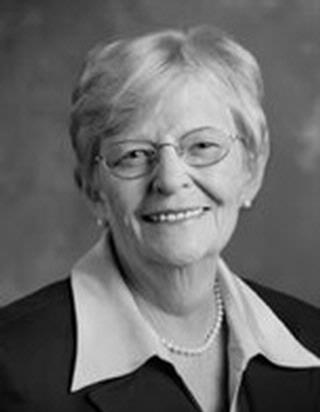 Barbara Iglewski, professor emeritus in the Department of Microbiology and Immunology, will be inducted into the National Women's Hall of Fame this weekend. She is the third faculty member to be enshrined in Seneca Falls: Judith Pipher, professor emeritus of physics and astronomy, and Loretta Ford, founding dean of the School of Nursing, were inducted in 2007 and 2011, respectively.
Barbara Iglewski, professor emeritus in the Department of Microbiology and Immunology, will be inducted into the National Women's Hall of Fame this weekend. She is the third faculty member to be enshrined in Seneca Falls: Judith Pipher, professor emeritus of physics and astronomy, and Loretta Ford, founding dean of the School of Nursing, were inducted in 2007 and 2011, respectively.
Sneak Peak of The Brain with Dr. David Eagleman at The Little Theater Followed by Panel Discussion Featuring Liz Romanski
Monday, September 28, 2015
 The Brain with Dr. David Eagleman
The Brain with Dr. David Eagleman
Wed, 09/30/2015 - 7:00pm - 9:00pm
Join WXXI for a special preview screening of a new series that tells the story of the inner workings of the brain.
The Brain with Dr. David Eagleman, a new six one-hour series that explores the human brain in an epic series that reveals the ultimate story of us, why we feel and think the things we do, premieres on WXXI-TV in October 14th. But before it does, you can enjoy a sneak preview of the series on the big screen at The Little Theater (240 East Avenue) on Wednesday, September 30 at 7 p.m. The event is free, but seats are first come first served. WXXI is pleased to partner with the Rochester Museum & Science Center to bring you this screening, followed by a panel discussion featuring Liz.
For further information, please visit the WXXI website.
NSC Student Humberto Mestre M.D. Awarded Travel Grant to SFN 2015
Sunday, September 20, 2015
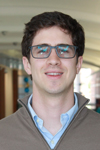
Humberto Mestre, M.D.
In 2014, Humberto was selected for the Latin America Training Program by the Society for Neuroscience and the International Brain Research Organization.
This program was formerly known as the Ricardo Miledi Neuroscience Training Program. The Program allowed 15 young scientists from Latin America and the Caribbean to attend a three week course where top faculty from across the region and North America provided the young scientists with lectures, lab exercises using cutting edge techniques, and training on vital professional development topics - one speaker was Dr. Deborah Cory-Slechta.
The completion of the year-long participation culminated with a travel grant to attend the Society for Neuroscience Meeting 2015 in Chicago, IL and to present science at the International Fellows Poster Session to be held on Saturday, October 17 from 6:30 pm-8:30 pm in Hall A of McCormick Place.
Wilmot Cancer Institute’s Research Director Wins $6.3M Outstanding Investigator Award
Thursday, September 17, 2015
Hartmut "Hucky" Land, Ph.D., the Robert and Dorothy Markin Professor of Biomedical Genetics at the University of Rochester, received a newly established multimillion dollar award from the National Cancer Institute that supports exceptional scientists with seven years of uninterrupted funding.
The NCI Outstanding Investigator Award (OIA) is in its inaugural year. It was designed to reward productive and influential researchers by giving them the freedom to pursue long-term goals without having to re-submit grants each cycle. He will continue to test a bold hypothesis that's been the cornerstone of his work for 30 years—that different cancers have many shared features, and understanding the common characteristics of cancer might unlock the next generation of targeted treatments.
"I feel very grateful and a bit humbled," said Land, director of research and co-director at UR Medicine's Wilmot Cancer Institute. "It's a wonderful affirmation of our focus on the common core of cancers and the work of our research team."
NB&A Faculty take honors at Convocation 2015
Thursday, September 10, 2015
- Ania Majewska PhD - Outstanding Graduate Program Director
- John Olschowka PhD - 1st Year Teaching Special Commendation
- Martha Gdowski PhD - Gold Medal Teaching Award
- Nina Schor MD, PhD - Faculty Academic Mentoring Award
Congratulations All!!
2015 Awards Announced
Tuesday, September 8, 2015
MELVILLE A. HARE AWARD FOR EXCELLENCE IN GRADUATE RESEARCH (MBI): Denise Skrombolas and Benson Cheng
MELVILLE A. HARE AWARD FOR EXCELLENCE IN GRADUATE TEACHING (MBI): Jennifer Colquhoun
OUTSTANDING GRADUATE STUDENT TEACHER: Jim Miller, Ph.D.
EXCELLENCE IN POSTDOCTORAL MENTORING: Luis Martinez-Sobrido, Ph.D.
GRADUATE ALUMNI AWARD: Deborah Fowell, Ph.D.
OUTSTANDING T32 PROGRAM DIRECTOR: Stephen Dewhurst, Ph.D.
FIRST YEAR EXCELLENCE IN TEACHING: Constantine Haidaris, Ph.D.
FACULTY MENTORING AWARD FOR BASIC SCIENCE: Minsoo Kim, Ph.D.
SPECIAL COMMENDATION FOR FIRST YEAR TEACHING: John Frelinger, Ph.D.
OUTSTANDING POSTDOCTORAL MENTOR AWARD: Aitor Nogales Gonzalez, Ph.D.
OUTSTANDING POSTDOCTORAL RESEARCHER AWARD: Eva-Stina Edholm, Ph.D.
Immune Cells Take Cue from Animal Kingdom: Together, Everyone Achieves More
Friday, September 4, 2015
Much like birds fly in flocks to conserve energy, dolphins swim in pods to mate and find food, and colonies of ants create complex nests to protect their queens, immune cells engage in coordinated behavior to wipe out viruses like the flu. That’s according to a new study published in the journal Science by researchers at the University of Rochester School of Medicine and Dentistry.
The findings reveal, for the first time, how immune cells work together to get to their final destination – the site of an injury or infection. The body is expansive and a virus or bacteria can take hold in any number of locations: the lungs, the throat, the skin, the stomach or the ear, just to name a few. How do immune cells, specifically the ones that are responsible for killing foreign invaders, know where to go?
Alan Grossfield's Research Featured in Cosmos Article
Tuesday, September 1, 2015
Research performed by Associate Professor Alan Grossfield and colleagues into how a new class of drugs fights bacterial infections was highlighted in a recent Cosmos Magazine article. Dr. Grossfield's research was also recently highlighted in EurekaAlert!, an online magazine run by the American Association for the Advancement of Science.
EHSC Welcomes Dr. Martha Susiarjo
Tuesday, September 1, 2015

The Environmental Health Sciences Center (EHSC) would like to welcome Dr. Martha Susiarjo to URMC.
Dr. Martha Susiarjo applies her background in epigenetics to understanding whether epigenetic regulation of genes contributes to gene-environment interaction during early development. She joins us as Assistant Professor from the University of Pennsylvania, where she recently completed her postdoc studying environmental estrogens and regulation of imprinted genes (genes contributed by only one parent). Dr. Susiarjo employs a mouse model to understand the mechanism(s) by which environmental exposures -- obesogenic endocrine disrupting chemicals in particular -- during in utero development can shape the future health outcomes of the offspring. She hopes to identify mechanisms in order to better inform exposure prevention efforts.
Dr. Susiarjo looks forward to collaborating with center members to utilize her expertise in epigenetics, especially DNA methylation, in various models of environmental perturbations. She also hopes collaborative efforts can elucidate how nutritional intervention may provide protective effects on environment-induced developmental outcomes.
Carney lab looks beyond inner ear in quest for better hearing aids
Friday, August 28, 2015
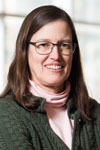 Most hearing aids on the market today are designed to mimic what happens in our inner ear - specifically the amplifying role of the outer hair cells.
Most hearing aids on the market today are designed to mimic what happens in our inner ear - specifically the amplifying role of the outer hair cells.
However, the lab of Laurel Carney, Professor of Biomedical Engineering, is studying what happens beyond the inner ear - in the complex network of auditory nerve fibers that transmit the inner ear's electrical signals to the brain, and in the auditory center of the midbrain, which processes those signals.
Therein lies the key to creating hearing aids that not only make human speech louder but clearer, Carney believes.
An important focus of her research uses a combination of physiological and behavioral studies, and computer modeling, to study the 30,000 auditory nerve fibers on each side of our brain that transmit electrical signals from the inner ear. Critical to this is the initial transduction
of mechanical energy to electrical signals that occurs in the inner hair cells of the inner ear's organ of Corti.
This is critical for shaping the patterning of responses in the auditory nerves, and the patterning of those responses at this first level, where the signal comes into the brain, has a big effect on the way the mid brain responds to the relatively low frequencies of the human voice,
Carney explained.
In people with healthy hearing, the initial transduction results in a wide contrast in how various auditory nerve fibers transmit this information. The responses of some fibers are dominated by a single tone, or harmonic, within the sound; others respond to fluctuations that are set up by the beating of multiple harmonics,
Carney said. In the mid brain, neurons are capable of assimilating this contrast of fluctuating and nonfluctuating inputs across varying frequencies. They begin the process of parsing out the sounds of speech and any other vocalizations that involve low frequencies. A better understanding of how this process works in the midbrain, Carney believes, could yield new strategies for designing hearing aids.
A lot of people have tried to design hearing aids based just on what is going on in the inner ear, but there's a lot of redundancies in the information generated there. We argue that you need to step back and, from the viewpoint of the midbrain, focus on what really matters. It's the pattern of fluctuations in the auditory nerve fibers that the midbrain responds to. The sort of strategies we're suggesting are not intuitive. The idea of trying to restore the contrast in the fluctuations across different frequency channels has not been tried before. The burden is on us to prove that it works,
she added.
To that end, Carney works closely with Joyce McDonough, Professor of Linguistics, in exploring how auditory nerve fiber transmissions play a role in coding speech sounds. Her lab also works closely with that of Jong-Hoon Nam, Assistant Professor of Mechanical Engineering and of Biomedical Engineering, whose inner-ear studies were described in this newsletter last week. Carney shares what her lab is learning about the interface of auditory nerve fiber signaling with the brain, and in return, we try to include in our models a lot of the nonlinear properties of the inner ear that he (Nam) has been working on. By interacting with his lab, we hope to continue to modernize our model as he discovers more,
Carney said.
New patent issued for Professor Hocking
Wednesday, August 26, 2015
The patent titled "Chimeric Fibronectin Matrix Mimetics and Uses Thereof" (US 9,072,706) has recently been assigned to the University of Rochester with inventors Denise C. Hocking, Ph.D. (Pharmacology and Physiology, BME, RCBU) and Daniel Roy, Ph.D. (BME PhD 2012 alumnus). The patent relates to a series of recombinant fibronectin peptide mimetics developed to promote wound repair. The technology falls under a new and exciting class of therapies known as wound biologics. The primary commercial application for this technology is to promote healing of hard-to-heal or chronic wounds, including diabetic, venous, and pressure ulcers, which impose a significant health care burden worldwide. Encouraging results from recent studies indicate that topical application of these fibronectin peptide mimetics to full-thickness excisional wounds in diabetic mice accelerates wound closure and promotes granulation tissue deposition, remodeling, and re-vascularization. Denise Hocking is an Associate Professor of Pharmacology and Physiology and of Biomedical Engineering. Daniel Roy is currently a post-doctoral fellow at the US Army Institute of Surgical Research in San Antonio, TX.
NGP students receive the 2015 Convocation Awards
Wednesday, August 26, 2015
Garrick Salois, 1st year student, is this year's recipient of the Irving L. Spar Fellowship Award.
Humberto Mestre, 1st year student, was awarded the Merritt and Marjorie Cleveland Fellowship.
Holly Beaulac, 1st year student, received this year's Graduate Alumni Fellowship Award.
Jenn Stripay, 5th year student, was selected to receive this year's Outstanding Student Mentor Award.
Congrats to all!
Vision Expert David Williams Receives the Beckman-Argyros Award
Wednesday, August 12, 2015

David Williams, Ph.D.
$500,000 prize for his transformative breakthrough in vision research
David Williams, widely regarded as one of the world's leading experts on human vision, has been named the 2015 recipient of the Beckman-Argyros Award in Vision Research. Williams pioneered the use of adaptive optics technologies for vision applications. He serves as the William G. Allyn Professor of Medical Optics, director of the Center for Visual Science and dean for research in Arts, Science, and Engineering at the University of Rochester.
The award, bestowed by the Arnold and Mabel Beckman Foundation, rewards an individual who has made transformative breakthroughs in vision research. Williams will receive a total of $500,000, along with a solid gold commemorative medallion.
It's an incredible honor for me to receive this award from the Arnold and Mabel Beckman Foundation,
said Williams. He added that one aspect that made this award particularly special is that it allows our group to take risks.
FDA Approves Tool for Diagnosing Dementia in a Doctor's Office
Monday, August 10, 2015

Dr. Charles Duffy
A small company started by a neuroscientist at the University of Rochester has moved closer to providing doctors with what he says is a simple, computer-based tool to help detect early signs of Alzheimer's disease or other forms of dementia.
Cerebral Assessment Systems has received marketing approval from the U.S. Food and Drug Administration for Cognivue, a cognitive-assessment tool that functions somewhat like a video game. A patient can perform the inexpensive and simple test while a time-strapped primary-care physician tends to other patients. The 10-minute, non--invasive examination can detect subtle lapses in the brain’s perceptual ability that may signal the early stages of mental decline caused by dementia.
The federal government's approval to market the device comes as Alzheimer's researchers everywhere step up the pursuit for easier and more inexpensive ways to identify dementia in its earliest stages.
Look, there is a late-life tsunami of late-life cognitive decline coming at us, and health-care providers are standing on the beach,
said Charles J. Duffy, a neurology professor at the University of Rochester Medical Center who
founded the company. What we are all about is making cognitive care part of primary care.
Read the article from the Washington Post.
1st Annual Immune Imaging Symposium To Be Held November 7, 2015
Wednesday, August 5, 2015
The Program for Advanced Immune Bioimaging at the University of Rochester will host the 1st Annual Immune Imaging Symposium November 7th, 2015 from 8:30 am -- 5pm.
The free symposium will provide a forum where the newest developments in understanding immune function through visualizing immunity 'in action' will be shared and discussed. The goal of the symposium is to foster lively scientific discussion, exchange of ideas and future collaborations. We have an exciting program including a distinguished group of international speakers, an interactive poster session and opportunities for oral presentations from students and postdoctoral fellows.
For more information and to register, visit the Immune Imaging Symposium website.
Could Your Sleep Position Help Reduce Alzheimer’s Risk?
Wednesday, August 5, 2015
Researchers at SUNY Stony Brook and The University of Rochester think so.
Sleeping in the lateral, or side position, as compared to sleeping on one’s back or stomach, may more effectively remove brain waste and prove to be an important practice to help reduce the chances of developing Alzheimer’s, Parkinson’s and other neurological diseases, according to researchers at Stony Brook University.
In the paper, “The Effect of Body Posture on Brain Glymphatic Transport,” Dr. Benveniste and colleagues used a dynamic contrast MRI method along with kinetic modeling to quantify the CSF-ISF exchange rates in anesthetized rodents’ brains in three positions – lateral (side), prone (down), and supine (up).
Dr. Benveniste and first-author Dr. Hedok Lee, Assistant Professor in the Departments of Anesthesiology and Radiology at Stony Brook developed the safe posture positions for the experiments. Their colleagues at the University of Rochester, including Lulu Xie, Rashid Deane and Maiken Nedergaard, PhD, used fluorescence microscopy and radioactive tracers to validate the MRI data and to assess the influence of body posture on the clearance of amyloid from the brains.
Environmental Medicine News: EHSC Grant Renewal, New Appointment
Wednesday, July 29, 2015
Great news from Environmental Medicine—its Environmental Health Sciences Center (EHSC) core grant was recently renewed for the 41st straight year. The department ushered in the $7.5 million, five-year, EHSC award from the National Institute of Environmental Health Sciences (with a remarkable score of 12). She is also overseeing the setup of EHSC’s new epigenetics core facility. Funding for the Center began in 1975 and has been continuously supported by the NIH for costs related to infrastructure, career development, biostatistics, and to support collaborations across research departments at URMC.
Environmental Medicine also hired a new scientist with an interest in reproductive toxicity and epigenetics, a hot field concerned with investigating the environmental factors (such as the endocrine-disrupting chemical bisphenol A) that cause changes in gene expression across generations. Martha Susiarjo, Ph.D., completed a post-doctoral fellowship at the University of Pennsylvania and will join the UR as an assistant professor Sept. 1. She brings an NIH K99 award and expertise to the new epigenetics core facility.
The EHSC will celebrate 50 years of research with a two-day symposium Sept. 23-24, which will include a Science Café Series at the Pittsford Barnes & Noble, a poster session in Flaum Atrium, and a full slate of presentations at URMC from faculty and local civic leaders. Planning is under way; stay tuned for more details.
Work of Liz Romanski Recognized by the University Research Community
Thursday, July 23, 2015

Researchers Pinpoint Brain's Audiovisual Processing Center
A new study is helping scientists more precisely understand how the brain stitches together sensory information such as sound and images, insight that could shed new light on conditions such as Autism. The research, which appears in the Journal of Neuroscience, identifies an area of the brain in the frontal lobe responsible for working memory and sensory integration.
Work in our laboratory is aimed at understanding how auditory and visual information are integrated since we know this process is crucial for recognizing objects by sight and sound, communicating effectively, and navigating through our complex world,
said Lizabeth Romanski, Ph.D., an associate professor in the University of Rochester Department of Neurobiology and Anatomy and co-author of the study.
Our recent study demonstrates that the prefrontal cortex plays an essential role in audiovisual working memory, and when this area is switched off our ability to remember both the auditory and visual cues is impaired,
said Bethany Plakke, Ph.D., a postdoctoral fellow in the Romanski lab and co-author of this study.
Babies' expectations may help brain development
Monday, July 20, 2015
Infants can use their expectations about the world to rapidly shape their developing brains, researchers have found.
A series of experiments with infants 5 to 7 months old has shown that portions of babies' brains responsible for visual processing respond not just to the presence of visual stimuli, but also to the mere expectation of visual stimuli, according to researchers from the University of Rochester and the University of South Carolina.
That type of complex neural processing was once thought to happen only in adults—not infants—whose brains are still developing important neural connections.
We show that in situations of learning and situations of expectations, babies are in fact able to really quickly use their experience to shift the ways different areas of their brain respond to the environment,
said Lauren Emberson, who conducted the study at the University of Rochester's Baby Lab while a research associate with Richard Aslin in the department of brain and cognitive sciences.
Researcher Wins Auditory Neuroscience Award
Tuesday, July 7, 2015
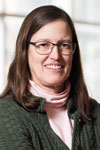 Laurel Carney, a professor of Biomedical Engineering, has been recognized for her work by the premier scientific organization in the field of acoustics. The Acoustical Society of America has awarded Carney the William and Christine Hartmann Prize in Auditory Neuroscience.
Laurel Carney, a professor of Biomedical Engineering, has been recognized for her work by the premier scientific organization in the field of acoustics. The Acoustical Society of America has awarded Carney the William and Christine Hartmann Prize in Auditory Neuroscience.
It's truly a great honor to receive an award created by Bill and Christine Hartmann, two of my role models,
said Carney. I welcome the challenge to emulate their life of discovery, presentation, publication, service, and education throughout the world.
William and Christine Hartmann established the award with a donation to recognize and honor research that links auditory physiology with auditory perception or behavior in humans or other animals.
William Hartmann is a physicist, psychoacoustician, and former president of the Acoustical Society of America. His contributions to the field involved pitch perception, signal detection, modulation detection, and the localization of sound.
In her research lab, Carney is working to better understand how the brain translates sounds into patterns of electrical impulses. By studying physiology, human hearing, and computer models, Carney hopes to learn how the brain distinguishes sounds in noisy environments and why even a small degree of hearing loss can lead to major problems. Her ultimate goal is to develop effective strategies to help people who have experienced hearing loss.
Carney earned her M.S. and Ph.D. degrees in electrical engineering at the University of Wisconsin-Madison. She was an associate professor of biomedical engineering at Boston University and professor of biomedical engineering at Syracuse University before joining the faculty at the University of Rochester in 2007, where she serves as professor in three departments—biomedical engineering, neurobiology and anatomy, and electrical and computer engineering.
Flaum Eye Institute Scientist Gets Funding to Study Vision Loss in Batten Disease
Thursday, July 2, 2015
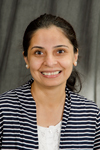
Ruchira Singh, Ph.D.
University of Rochester Medical Center scientist Ruchira Singh, Ph.D., received a grant from the Knights Templar Eye Foundation to investigate how neurodegenerative diseases, such as juvenile Batten disease, cause blindness.
Singh, assistant professor of Ophthalmology and Biomedical Genetics, will use the $60,000 grant to create a human model of Batten disease (CNL3) using patient’s own cells. The project may lead to better understand the disease mechanisms, aiding in the development of drug therapies to preserve vision in affected patients.
For the complete article, visit the URMC newsroom.
Mink Receives First Ever Tourette’s Association of America Award
Wednesday, July 1, 2015
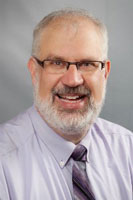
Dr. Jonathan Mink
Jonathan Mink, M.D., Ph.D., chief of Child Neurology at Golisano Children’s Hospital, is the first recipient of the Tourette Association of America’s Oliver Sacks Award for Excellence. The award, named for the famous British neurologist, was to be presented at the First World Congress on Tourette Syndrome and Tic Disorders, but due to a scheduling conflict, representatives from TAA instead traveled to Rochester to present him with the award in a surprise ceremony.
The award is in recognition of his many years of leadership, mentorship, research, and care on behalf of all people touched by Tourette syndrome and tic disorders around the world.
$4M NIH Award Expands Joint Training of Deaf Scholars in Rochester
Friday, June 26, 2015
The University of Rochester School of Medicine and Dentistry has received nearly $4 million for a program that would serve as a national model to educate post-doctoral students who are deaf or hard-of-hearing.
The grant makes it possible to expand and strengthen an ongoing, unique relationship between the UR, Rochester Institute of Technology and RIT’s National Technical Institute for the Deaf to prepare deaf and hard-of-hearing scholars for careers in the biomedical and behavioral sciences. Two years ago the local institutions partnered to build a similar program for graduate students, facilitating the transition from master’s degree programs offered at RIT to Ph.D. programs at UR.
B&B Department Mourns the Loss of Rose Burgholzer
Wednesday, June 24, 2015
It is with much sadness that we inform everyone of the passing of Rose Burgholzer, after a long and courageous battle with cancer. Rose worked at the University for 40 years, almost half of that as an administrator in our department. She was a dear friend and colleague and will be greatly missed. Many former students remember Rose fondly and have communicated with her during her illness, and she graciously received a steady stream of visiting faculty and staff in her home these past few years.
A Funeral Mass was held Wednesday, June 17, at St. Kateri at St. Margaret Mary Church in Rochester, with entombment at Holy Sepulchre Cemetery. Memorials may be directed to a charity of your choice. View her obituary and a slideshow from Rose's family.
Duje Tadin explains how understanding GPS can help you hit a curveball
Monday, June 22, 2015
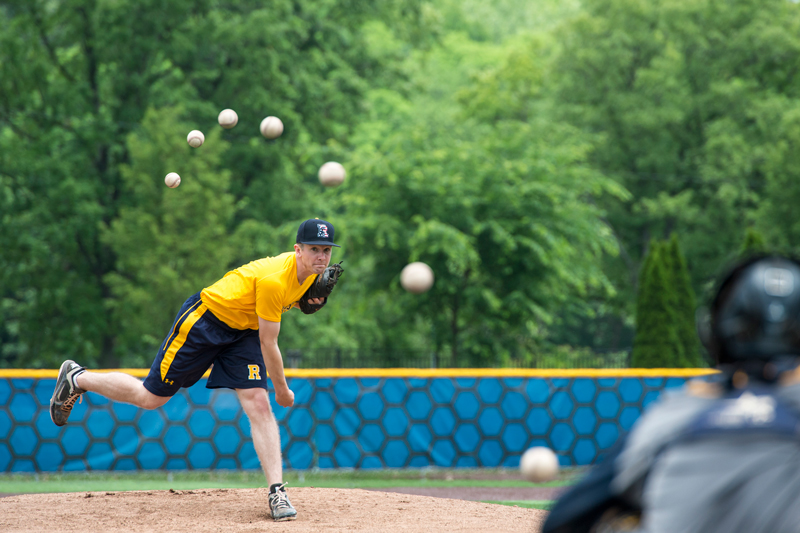
Our brains track moving objects by applying one of the algorithms your phone's GPS uses, according to researchers at the University of Rochester.
This same algorithm also explains why we are fooled by several motion-related optical illusions, including the sudden break
of baseball's
well known curveball illusion
.
Like GPS, our visual ability, although quite impressive, has many limitations,
said the study's coauthor, Duje Tadin, associate professor of brain and
cognitive sciences at the University of Rochester.
The new open-access study published in PNAS shows that our brains apply an algorithm, known as a Kalman filter, when tracking an object's position. This algorithm helps the brain process less than perfect visual signals, such as when objects move to the periphery of our visual field where acuity is low.
Upcoming NGP PhD Defenses
Monday, June 22, 2015
Two NGP students are presenting their defense seminars next week.
Wei Sun defends on Monday June 29th and Adam Pallus defends on July 1st
To read their abstracts, visit the Defense Seminars site.
Congratulations to Brianna Sleezer on becoming the first intern matched from URBEST!
Wednesday, June 17, 2015

Brianna Sleezer, NSC PhD student
Brianna Sleezer, a neuroscience PhD graduate student in the Hayden Lab, is URBEST's (Broadening Experiences in Scientific Training) first intern that has been matched with a host: The Children's Environmental Health Network. Brie made things happen by connecting with Nsedu Obot Witherspoon, the Executive Director for CEHN, at a URBEST Career Story. She'll be starting her three-month internship at the beginning of September.
URBEST is a five-year, NIH-funded program to help health science and biomedical PhD graduate students and postdoctoral appointees to explore and better prepare themselves for diverse career paths. The program combines educational activities to highlight research-related careers and to instruct in leadership and professionalism. The URBEST program also provides opportunities to a subgroup of trainees for short-term (hours per week) or long-term (full time for up to three month) internships as a capstone experience. Internship candidates are selected based on their research productivity, engagement in URBEST activities and PI approval.
Kerry O'Banion presents at the CTSI Workshop - Patent Infringement: COX Fighting
Sunday, June 14, 2015
Kerry O'Banion, interim chair of the Department of Neurobiology and Anatomy, and University President Emeritus Thomas Jackson will present Patent Infringement: COX Fighting
, from noon to 1 p.m. Wednesday, June 17, in Helen Wood Hall Auditorium. The event is part of the CTSI workshop series, Good Advice: Case Studies in Clinical Research, Regulation, and the Law
.
Foxe Appointed to Head Neuromedicine Research at URMC
Tuesday, June 9, 2015
 John J. Foxe, Ph.D., a
nationally-regarded scientist in the field of neurobiology, has been named the research director of the DelMonte
Neuromedicine Institute (DNI) and the Kilian J. and Caroline F. Schmitt Chair of the Department of Neurobiology and Anatomy at the University of Rochester School of Medicine and
Dentistry.
John J. Foxe, Ph.D., a
nationally-regarded scientist in the field of neurobiology, has been named the research director of the DelMonte
Neuromedicine Institute (DNI) and the Kilian J. and Caroline F. Schmitt Chair of the Department of Neurobiology and Anatomy at the University of Rochester School of Medicine and
Dentistry.
The University of Rochester has long been home to some of the nation’s most innovative and groundbreaking research
in the field of neuroscience and neuromedicine,
said Joel Seligman, president of the University of
Rochester. John’s appointment signals our determination to make this field a centerpiece of our progress as a
University and Medical Center.
I am honored to be taking the helm of the DNI at this incredibly exciting time in modern neuroscience
research,
said Foxe. The University of Rochester is already world-renowned for its superb work in this
field and we now have the opportunity to build an even stronger presence. Tens of millions of Americans suffer
from a major mental illness each year, be it depression or anxiety, a major psychotic disorder, or Alzheimer’s
disease, stroke, or addiction. And the list goes on. The National Institutes of Health estimates that only about
half of these people ever receive treatment. We can and we must do better. It is only through research that we
can develop new effective treatments and I am committed to placing the DNI and the University of Rochester at
the very forefront of these efforts.
$10 Million Grant Funds Center to Study OCD at UR School of Medicine and Dentistry
Thursday, June 4, 2015
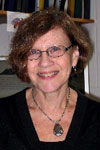 Suzanne Haber leads a research team to investigate OCD. She says the disease is characterized by intrusive,
ruminating thoughts (obsessions), and impulses to carry out repetitive behaviors (compulsions), despite the awareness by most patients that these behaviors don't make sense.
Suzanne Haber leads a research team to investigate OCD. She says the disease is characterized by intrusive,
ruminating thoughts (obsessions), and impulses to carry out repetitive behaviors (compulsions), despite the awareness by most patients that these behaviors don't make sense.
The goal of a new $10 million grant awarded to the scientists is to improve our understanding of the brain networks that play a central role in obsessive-compulsive disorder (OCD). Together with leading mental health researchers at four other institutions in the U.S., they will pinpoint specific abnormalities within the brain circuits that are associated with the disease and use this information to guide new treatment options for the three million-plus Americans who live with the disorder.
The five-year grant from the National Institute of Mental Health (NIMH) establishes a new Silvio O. Conte Center for Basic and Translational Mental Health Research at the University of Rochester. Conte Centers are designed to bring scientists with diverse but complimentary backgrounds together to improve the diagnosis and treatment of mental health disorders.
13 Things to Know About Biomedical Research at UR
Friday, May 29, 2015
The Democrat and Chronicle was one of 12 Gannett newspapers that partnered with a USA Today investigation, Biolabs in Your Backyard, about the concerns and dangers that can accompany biomedical research.
The investigation focused on more than 200 high-containment biomedical labs around the nation that are equipped to handle select agents and other dangerous research.
Research involving select agents is considered by the federal government to be the most worrisome biomedical lab work because of potential health risks and security concerns, especially since some of these agents and toxins can be used in biological warfare.
The University of Rochester has one high-containment lab at its medical center that in recent years has worked with Francisella tularensis, which is a Tier I select agent, the highest level of concern.
Pharmacology Speakers and Students Win Poster Awards at UNYPS
Tuesday, May 19, 2015
Congratulations to the following Graduate Students and Invited Student Speakers for winning poster awards at the 4th Annual Upstate New York Pharmacology Society (UNYPS) meeting G-Protein Coupled Receptor Signaling Systems in Health and Diseasewhich was held at the University of Rochester on May 19th, 2015. Graduate student winners were Hannah Stoveken, working in the lab of Dr. Gregory G. Tall, Isaac Fisher, working in the lab of Dr. Alan V. Smrcka Alex Hajduczok, working in the lab of Dr. Gregory G. Tall and Rafael Gil de Rubio, working in the lab of Dr. Alan V. Smrcka Invited student speaker winners were Walter Knight, Bharti Patel, graduate student in the lab of Dr. Gregory G. Tall and Jesi Lee Anne To, graduate student in the lab of Dr. Alan V. Smrcka
Ben Crane Awarded Nicholas Torok Vestibular Award by the American Neurotology Society
Monday, May 11, 2015
Otolaryngology associate professor, Benjamin Crane, MD, PhD, was awarded the Nicholas Torok Vestibular Award by the American Neurotology Society at the 50th Annual meeting in Boston on April 25th. The title of his presentation was An automated vestibular rehabilitation method for unilateral vestibular hypofunction.
The $1500 award is offered by the Society for the best lecture on an innovative observation, experience or technique in the field of Vestibular Basic Science, i.e., physiology, pathology or subjects serving clinical progress.
Congratulations Ben!
Understanding the Enemy Within that Causes Brain Damage after Cardiac Arrest
Thursday, May 7, 2015
A new $1.7 million grant will bring together a team of researchers to study – an ultimately thwart – the chain reaction that occurs in the body after cardiac arrest that can ultimately lead to brain damage and death.
“While the biological sequence of events is triggered by cardiac arrest, the death and disability associated with this event is the result of a broader systemic injury caused the initial loss of blood flow and subsequent tissue inflammation once blood circulation is restored,” said University of Rochester Medical Center neurologist Marc Halterman, M.D., Ph.D., the principal investigator of the study. In fact, it is the cumulative effect of this systemic injury on the brain, and not the heart – that ultimately leads to mortality in the disorder.
2015 Awards Announced
Wednesday, May 6, 2015
The 2015 Vincent duVignaeud Award for excellence in basic research will be awarded at this year's commencement to Dr. Steven Baker who completed his Ph.D. in Luis Martinez-Sobrido's lab.
The 2015 Wallace O. Fenn Award for excellence in basic research will be awarded at this year's commencement to Dr. Julie Sahler who completed her Ph.D. in Richard Phipps' lab.
Award Recipients for the Melville A. Hare Award for Excellence in Research have been awarded to Dr. Denise Skrombolas who completed her Ph.D. in the lab of John Frelinger and Dr. Benson Cheng who completed his Ph.D. in Luis Martinez-Sobrido's lab.
The Melville A. Hare Award for Excellence in Teaching has been awarded to Jennifer Colquhoun. Jennifer is in Paul Dunman's laboratory.
A Departmental Peer Mentoring Award was established this year. The recipient of the 2015 award is Lisbeth Boule. Lisbeth is in Paige Lawrence's laboratory.
Professors Dalecki and Hocking Research Wins Best Paper Award at SPIE-DSS
Wednesday, May 6, 2015
The latest research by Professor Diane Dalecki (BME, RCBU) and Professor Denise C. Hocking (Pharmacology & Physiology, BME, RCBU) was recognized with the Best Paper Award at the Micro- and Nanotechnology Sensors, Systems, and Applications Conference of the SPIE Defense + Security Symposium held recently in Baltimore, Maryland. Their invited paper titled "Guiding Tissue Regeneration with Ultrasound In Vitro and In Vivo" detailed three biomedical ultrasound technologies under development in their laboratories to stimulate tissue formation and regeneration. Co-authors of the paper included Sally Child, Carol Raeman, and BME graduate students Eric Comeau and Laura Hobbs. One technology under development employs forces within an ultrasound standing wave field to provide a noninvasive approach to spatially pattern endothelial cells and thereby guide the development of complex microvessel networks. A second technology uses ultrasound to site-specifically control the microstructure of collagen fibers within engineered hydrogels to direct cell function. The third line of research focuses on developing ultrasound as a therapeutic approach to enhance tissue regeneration in chronic wounds. These ultrasound technologies offer new solutions to key challenges currently facing the fields of tissue engineering, biomaterials fabrication, and regenerative medicine.
The SPIE DSS 2015 Defense + Security Symposium consisted of 32 separate conferences spanning 5 days with over 1200 total presentations. Conferences focused on a wide range of topics of interest to defense and security, including imaging, sensing, photonics, materials, and biomedical applications. The Symposium is the leading meeting for scientists, researchers and engineers from industry, military, government agencies, and academia throughout the world. The Micro- and Nanotechnology Sensors, Systems, and Applications Conference is one of the two largest conferences within the entire Defense + Security Symposium, and Professors Hocking's and Dalecki's presentation was one of over 100 invited presentations in the conference.
Lower Air Pollution, Higher Birth Weight
Tuesday, May 5, 2015
A team of researchers led by Associate Professor, Dr. David Rich (Public Health Sciences & Environmental Medicine) studied birth weights before, during and after the Beijing Olympics, during which widespread pollution reduction efforts were instated. They found infants born shortly after the Olympics had significantly higher birth weights than infants born in other years. The researchers compiled information from 83,672 term births (37 to 42 weeks gestational age at birth) to mothers in four urban districts in Beijing. They compared birth weights for mothers whose eighth month of pregnancy occurred during the 2008 Olympics/Paralympics with those whose eighth month of pregnancy occurred at the same time of year in the years before (2007) and after (2009) the games when pollution levels were at their normally higher levels. They found that the babies born in 2008 were on average 23 grams larger than those in 2007 and 2009.
Rianne Stowell Receives Honorable Mention for NSF Research Fellowship
Friday, May 1, 2015
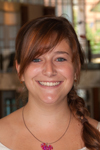
Rianne Stowell, Ph.D. candidate
Four University of Rochester graduate students and seven alumni have been named recipients of the National Science Foundation Graduate Research Fellowships. Additionally, five current students and 11 recent alumni were given honorable mentions by the NSF.
The fellowship, which is part of a federally sponsored program, provides up to three years of graduate study support for students pursing doctoral or research-based master’s degrees. Since the program’s inception in 1952, NSF has provided fellowships to individuals selected early in their graduate careers based on their demonstrated potential for significant achievements in science and engineering. Of the more than 16,500 applicants this year, only 2,000 were awarded fellowships. The fellowship includes a three-year annual stipend of $34,000, a $12,000 educational allowance to the institution, and international research and professional development opportunities for recipients.
Congratulations Rianne on the honorable mention!!
For the complete list of recipients, visit the story at the UR Newsroom.
Rochester team receives National Eye Institute grant for restoring vision through retinal regeneration
Friday, May 1, 2015

David Williams, the William G. Allyn Professor of Medical Optics, Dean for research and Director of the Center for Visual Science
A team of researchers at the University of Rochester is designing an optical system to image responses to light of large numbers of individual cells in the retina, with the objective of accelerating the development of the next generation of cures for blindness. The Rochester team and their partners will receive $3.8 million from the National Eye Institute over the next five years.
The new instrumentation we are developing builds on technology we had developed previously to improve vision through laser refractive surgery and contact lenses, as well as to diagnose retinal disease,
said Rochester's principal investigator David Williams. This is the first time we have designed instrumentation specifically to develop and test therapies to restore vision in the blind.
The National Eye Institute (NEI), part of the National Institutes of Health, announced the awards as part of its Audacious Goals Initiative to tackle the most devastating and difficult to treat eye diseases. The central goal is to restore vision by regenerating neurons and neural connections in the eye and visual system. The initiative places special emphasis on cells of the retina, including the light-sensitive rod and cone photoreceptors, and the retinal ganglion cells, which connect photoreceptors to the brain via the optic nerve.
URMC Start-up Takes Aim at Memory and Cognitive Problems
Thursday, April 30, 2015
Medications are available to treat many of the symptoms of neurodegenerative diseases like multiple sclerosis and Parkinson’s disease, but there is no drug or other therapy that improves the memory and cognitive problems that often plague patients. A new start-up company, built around research conducted at the University of Rochester School of Medicine and Dentistry, hopes to change that.
Camber NeuroTherapeutics Inc., founded based on discoveries made in the laboratories of Harris "Handy" A. Gelbard, M.D., Ph.D. and Stephen Dewhurst, Ph.D., plans to attack the cognitive component of neurodegenerative diseases using a completely new approach: stopping the inflammation in the brain, so-called neuroinflammation, that impairs the function of nerve cells and the vast networks they create. These neural networks allow us to store and recall memories, plan and prioritize, focus on particular tasks, and process sensory information.
Dr. David Yule invited to join Editorial Board of Gastroenterology
Wednesday, April 29, 2015
David I. Yule, Ph.D., Professor of Pharmacology and Physiology; of Medicine, Gastroenterology/Hepatology; and in the Center for Oral Biology has been invited to join the Editorial Board of Gastroenterology. Gastroenterology is the preeminent journal in the field of gastrointestinal disease. Gastroenterology is ranked 1st of 74 journals in the Gastroenterology and Hepatology category on the 2013 Journal Citation Reports, and has an Impact Factor of 13.926. As the official journal of the American Gastroenterological Association, Gastroenterology delivers up-to-date and authoritative coverage of both basic and clinical gastroenterology. Regular features include articles by leading authorities and reports on the latest treatments for diseases. Original research is organized by clinical and basic-translational content, as well as by alimentary tract, liver, pancreas, and biliary content.
Melinda Vander Horst presents at NCUR
Wednesday, April 29, 2015
Melinda Vander Horst (BME Class 2015) presented her recent research at the 29th Annual National Undergraduate Research Conference (NCUR) held at Eastern Washington University in April. NCUR is an interdisciplinary conference where undergraduate students representing universities from around the world present their research and creative works. Melinda presented her poster, titled Development of a dual transducer system for ultrasound standing wave field-induced particle banding
, with co-authors Eric Comeau (BME graduate student), Denise C. Hocking (Pharmacology & Physiology), and Diane Dalecki (BME). Melinda is a Xerox Undergraduate Research Fellow working with Professors Dalecki and Hocking on new ultrasound technologies for tissue engineering.
Anolik Elected to American Society for Clinical Investigation
Monday, April 27, 2015

Dr. Jennifer Anolik with
MSTP Director, Dr. Kerry O'Banion
Jennifer H. Anolik, M.D., Ph.D., associate professor of Medicine in the Division of Allergy/Immunology and Rheumatology, was named a member of the American Society for Clinical Investigation, one of the nation’s oldest and most respected medical honor societies. Anolik, who runs URMC’s Lupus Clinic and Program, was nominated for her work conducting translational and basic science research on lupus and rheumatoid arthritis. She joins 18 other Medical Center faculty members who have been inducted into the Society in the past. Anolik is a former URMC MSTP (M.D., '96) and Biochemistry (Ph.D., '94) student. During her time in the program, she conducted research with Robert Bambara, Ph.D. and Russell Hilf, Ph.D..
Anolik’s research focuses on the role of B cells in systemic autoimmune disease through synergistic and innovative approaches in translational immunology and animal models. It has fundamentally contributed to the understanding of how and why B cell targeted therapies can be efficacious in subsets of lupus and rheumatoid arthritis patients and established these therapies as a major advance in the field of immunologic disease. Her work has broad implications for other autoimmune diseases such as vasculitis and diabetes, as well immunologic diseases like malignancy and immune deficiency.
Under Anolik’s leadership, URMC was one of 11 research groups across the country recently chosen by the National Institutes of Health to join the NIH Accelerating Medicines Partnership in Rheumatoid Arthritis and Lupus Network, a partnership between the NIH, biopharmaceutical companies, advocacy organizations and academic scientists to more rapidly identify promising drug targets and develop new treatments for patients with these conditions. Anolik’s team was selected for this highly competitive award based on the novelty of their translational research proposal coupled with the unique collaboration between Orthopaedics and Rheumatology at URMC.
Does Artificial Food Coloring Contribute to ADHD in Children?
Monday, April 27, 2015
Kraft Macaroni & Cheese -that favorite food of kids, packaged in the nostalgic blue box—will soon be free of yellow dye. Kraft announced Monday that it will remove artificial food coloring, notably Yellow No. 5 and Yellow No. 6 dyes, from its iconic product by January 2016. Instead, the pasta will maintain its bright yellow color by using natural ingredients: paprika, turmeric and annatto (the latter of which is derived from achiote tree seeds).
The company said it decided to pull the dyes in response to growing consumer pressure for more natural foods. But claims that the dyes may be linked to attention-deficit hyperactivity disorder (ADHD) in children have also risen recently, as they did years ago, putting food dyes under sharp focus once again. On its Web site Kraft says synthetic colors are not harmful, and that their motivation to remove them is because consumers want more foods with no artificial colors.
Bernard Weiss, professor emeritus of the Department of Environmental Medicine at the University of Rochester Medical Center who has researched this issue for decades, says he is frustrated that the FDA has not acted on the research showing the connection between artificial dyes and hyperactivity. All the evidence we have has showed that it has some capacity to harm,
he says. In Europe that's enough to get it banned because a manufacturer has to show lack of toxic effects. In this country it's up to the government to find out whether or not there are harmful effects.
Weiss supports banning artificial colors until companies have evidence that they cause no harm. Like most other scientists in this field, he thinks more research, particularly investigating dyes' effects on the developing brain, is imperative.
NGP Graduate Student, Grayson Sipe, Wins Award for Excellence in Teaching
Monday, April 27, 2015

Grayson Sipe, Ph.D. candidate and Margaret H. Kearney, PhD, RN, FAAN, Professor and Vice Provost & University Dean of Graduate Studies.
Grayson Sipe, a Neuroscience Graduate Program student in Dr. Ania Majewska's lab, studying the roles of microglia during synaptic plasticity, has been named a winner of the 2015 Edward Peck Curtis Award for Excellence for Graduate Student Teaching.
Only a handful of these are awarded each year, and all this year's nominees were extremely well-qualified.
Congratulations Grayson!!!
Maquat and Kurosaki Awarded Fellowship
Friday, April 24, 2015
Lynne Maquat, the J. Lowell Orbison Distinguished Service Alumni
Professor in the Department of Biochemistry and Biophysics, and Research
Assistant Professor, Tatsuaki Kurosaki, Ph.D. have been awarded FRAXA Postdoctoral Fellowship for their application
entitled, Re-purposing clinically approved drugs to dampen hyperactive nonsense-mediated mRNA decay in fragile X
syndrome
.
The FRAXA Research Foundation was extremely impressed with
their proposed research, and delighted to support this exciting work
. Funding of 45,000 has been authorized
for the period from May 1, 2015 to April 30, 2016.
Congrats to both Lynne and Tatsuaki!
Gloria Culver, Biochemistry Program Graduate, Appointed Dean of the School of Arts & Sciences
Wednesday, April 22, 2015
Gloria Culver, former Biochemistry graduate student in the Phizicky Lab, has been appointed dean of the School of Arts & Sciences, effective immediately. Culver is currently a professor of Biology and Biochemistry & Biophysics. Peter Lennie, the Robert L. and Mary L. Sproull Dean of the Faculty of Arts, Sciences & Engineering, made the announcement following a yearlong national search. Culver has been serving as interim dean since July 1, 2014.
Harold Smith Awarded Drug Development Pilot Award
Tuesday, April 14, 2015
Biochemistry & Biophysics Professor, Harold Smith, PhD has been awarded a Drug Development Pilot Award for his project, Development of an Assay for High Throughput Screening for Antagonists of the Ebola VP40 Protein Function
. The project was externally reviewed by leading drug development researchers and received a meritorious score. To learn about Dr. Smith's research please visit the Smith lab site.
Congrats Harold!
Celebrating 50 Years at URMC and Saying Goodbye: Victor Laties
Friday, April 10, 2015

Dr. Victor Laties, Professor Emeritus
In 1965, a young Victor Laties left Johns Hopkins for the University of Rochester and never looked back. In 2015, Vic celebrated his 50th year at the University of Rochester Medical Center-a feat not surpassed by many. Primarily in the department of Environmental Medicine, Vic has touched many lives over the years with his great work ethic, caring attitude, his love of toxicology, and his fantastic photos that have graced the Environmental Medicine, Environmental Health Sciences Center (EHSC), and Toxicology websites over the past 50 years.
The first director of the toxicology training grant, that is now in his 37th year, Vic has been integral to it's success and has created many memories and passed down a wealth of knowledge to hundreds of students. Beginning in the departments of Biophysics, Psychology, and Pharmacology Vic has also made many a friend and has been a valued colleague to his peers. Vic has remained on the editorial board for the Journal of the Experimental Analysis of Behavior since 1962 (and the webmaster for the JEAB/JABA site), and has served as editor for several other experimental therapeutics and pharmacological journals throughout the years.
Vic won the Distinguished Service to Behavior Analysis Award from the Society for the Advancement of Behavior Analysis (SABA) in 1995 and 2003-the only person to win this award twice. He was a major figure in the development of both behavioral pharmacology and behavioral toxicology. His work with the Society for the Experimental Analysis of Behavior (SEAB) journals has been essential to their development and their sustained excellence over the last forty years. To date he has published well over 100 journal articles, book chapters and various other publications.
Vic's love of toxicology and the department is surpassed only by his love for his wife and family as he officially retires today and moves to Maryland to be closer to them and enjoy the nice weather. The department and all of his colleagues wish to express their heartfelt gratitude for the many years of service and contributions that he has given. He is truly one of a kind and will be missed.
To read more about Vic's many accolades please see the Association for Behavior Analysis International article and view his CV.
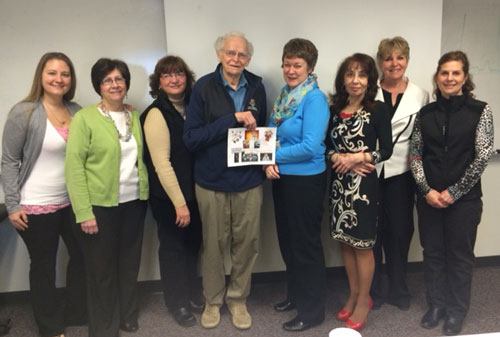
Vic and the Environmental Medicine, Toxicology and EHSC Staff
Lynne Maquat to Present Annual Hoffman Lecture
Thursday, April 9, 2015
Lynne Maquat, the J. Lowell Orbison Distinguished Service Alumni Professor in the Department of Biochemistry and Biophysics, will present the 17th annual Marvin J. Hoffman Lecture, "RNA and the New Genetics: From Bench to Therapeutics." The lecture begins at noon Friday, April 17, in the Class of '62 Auditorium (G-9425), Medical Center. RSVP to 273-5937 or apullen@admin.rochester.edu.
Brittany Baisch, PhD ’13 Wins Nanotoxicology Specialty Section Best Publication 2015 Award
Wednesday, April 8, 2015
Former Toxicology graduate student in Alison Elder's lab, Brittany Baisch (PhD '13) won the Nanotoxicology Specialty Section Best Publication 2015 Award at the Society of Toxicology (SOT) annual meeting in San Diego, CA. last week. She won the award for the paper, Equivalent titanium dioxide nanoparticle deposition by intratracheal instillation and whole body inhalation: the effect of dose rate on acute respiratory tract inflammation. Brittany is currently working as a toxicologist at Kraft Foods.
Celebrating Brain Awareness Week!
Wednesday, April 8, 2015
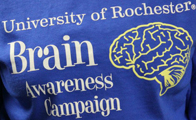
NGP student (with the support of PONs and SfN Rochester Chapter) organized the annual Brain Awareness Week and provided activities for grades K-3 at area schools.
Over the span of 2 weeks, from March 16-27, NGP students visited 19 classrooms at three different schools (Colebrook School in Irondequoit, Indian Landing in Penfield and West Ridge in Greece), grades K-4 working with over 350 kids!
They brought activities to the kids that focused on signal transduction, memory and perception. There was a team of 35 volunteers, including BCS and neuroscience undergrad and grad students that traveled to the schools. 6 NGP students were among the volunteers (Julianne Feola, Christy Cloninger, Jenn Stripay, Becky Lowery, Ryan Dawes and Susanne Pallo) participating in the planning and organization of the activities, school visits and training sessions.
Visit the Brain Awareness Week Facebook page for more information.
Marissa Sobolewski Wins Butcher New Investigator Award and 2nd Place Postdoctoral Fellow Poster Award at SOT
Friday, April 3, 2015

Postdoctoral Fellow in the Cory-Slechta lab, Marissa Sobolewski, PhD finished second in the Neurotoxicology SS Toshio Narashashi Postdoctoral Fellow Poster Award at the Society of Toxicology (SOT) annual meeting in San Diego, CA. last week.
Marissa also recently won the Richard Butcher New Investigator Award from the Neurobehavioral teratology society. Her research focus is Neurotoxicology, Etiology of neurobehavioral disease, Endocrine dysfunction, Synergistic Toxicity. Congrats!
UR Toxicology Graduate Students Make Strong Showing at 2015 SOT Meeting
Friday, April 3, 2015

Dr. Alison Elder and Elissa Wong
UR Toxicology graduate students made a strong showing at the Society of Toxicology (SOT) annual meeting in San Diego, CA. last week. 3rd year graduate student, Elissa Wong (Majewska Lab) and 5th year graduate student, Sage Begolly (O'Banion/Olschowka Labs) both won travel awards to attend and present their posters.
Elissa Wong and Dr. Alison Elder also attended the event, hosting the UR recruitment table at the Society of Toxicology (SOT) Committee on Diversity Initiatives (CDI) session. Congrats to all!
View all of the photos from the SOT meeting.
Former IGPN Student Laurie Robak, M.D., Ph.D. Receives Fellowship Award
Monday, March 30, 2015
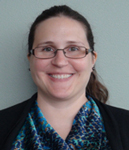
Laurie Robak, MD, PhD
Laurie Robak, MD, PhD, who graduated from the IGPN program in 2009, is a clinical fellow in the Laboratory for Integrative Functional Genomics, and is also currently completing her dual residency training in pediatrics and medical genetics. July 1st of this year, Laurie will be a postdoctoral research associate/clinical instructor in the laboratory of Dr. Joshua Shulman at Baylor Medical College, researching the genetics of Parkinson’s disease. Laurie recently received the Pfizer/ACMG Foundation Translational Genomic Fellowship Award.
Congrats Laurie!
Robert Dirksen to Head Department of Pharmacology and Physiology
Monday, March 30, 2015
Robert T. Dirksen, Ph.D. will serve as chair of the Department of Pharmacology and Physiology at the University of Rochester School of Medicine and Dentistry effective July 1, 2015, pending approval by the University Board of Trustees. Dirksen, who has conducted research and taught medical and graduate students at the University since 1998, is known for his superb track record of federal funding, his collaborative nature and his ability to inspire and engage trainees and colleagues alike.
“Bob recognizes the central role that Pharmacology and Physiology plays in much of the research that is conducted at the Medical Center and has a very clear and compelling vision for the future of the department,” said Mark B. Taubman, M.D., Dean of the School of Medicine and Dentistry and CEO of the University of Rochester Medical Center. “He is the perfect person to lead a group that bridges multiple scientific fields and clinical areas and we’re very excited for him to take the reins.”
Blocking Cellular Quality Control Mechanism Gives Cancer Chemotherapy a Boost
Friday, March 27, 2015
A University of Rochester team found a way to make chemotherapy more effective, by stopping a cellular quality-control mechanism, according to a study published today in Nature Communications.
The mechanism is known as NMD (nonsense-mediated mRNA decay), and scientists found that exposing breast cancer cells to a molecule that inhibits NMD prior to treatment with doxorubicin, a drug used to treat leukemia, breast, bone, lung and other cancers, hastens cell death.
The research team, led by Lynne E. Maquat, Ph.D., director of the Center for RNA Biology at the University of Rochester, acknowledges that the work is in the early stages and a long way from being applied in humans. But, they believe their data provide insights that could lead to new treatment strategies for cancer patients in the future.
Lynne Maquat Receives 2015 Gairdner International Award
Thursday, March 26, 2015
Lynne E. Maquat, Ph.D. received the 2015 Gairdner International Award for the discovery and mechanistic studies of nonsense-mediated mRNA decay, a cellular quality control mechanism that derails the production of unwanted proteins in the body that can disrupt normal processes and initiate disease. She is one of five scientists honored with the award, which is given every year to recognize the achievement of medical researchers whose work contributes significantly to improving the quality of human life.
The J. Lowell Orbison Endowed Chair and Professor of Biochemistry and Biophysics at the University of Rochester Medical Center, Maquat is known around the world for her work on nonsense-mediated mRNA decay, which is critically important in both normal and disease states. She is considered the uncontested pioneer on the subject and in 2011 was elected to the National Academy of Sciences for her exceptional research, which has been published in more than 130 peer-reviewed scientific articles.
Maquat is the first scientist from upstate New York to receive the Gairdner International Award, which is recognized for its rigorous peer-led selection process. A panel of active Canadian scientists reviews all nominations and passes their recommendations to a board of two dozen senior scientists from across Canada, the United States, Europe, Australia and Japan. After in-depth study and review, board members cast votes for the nominees whose achievements rise above all others in their field. According to the Gairdner Foundation, of the 313 winners to date, 82 have gone on to receive a Nobel Prize in Physiology or Medicine, a testament to the quality of the awardees.
The award was also highlighted in the Opinion pages of Saturday’s Democrat and Chronicle in the Thumbs up, thumbs down
section: Thumbs up: For Dr. Lynne Maquat, who is one of five biomedical researchers from around the world to win this year's Gairdner International Award. The University of Rochester Medical Center scientist has joined a prestigious group. Since 1959, more than a quarter of the Gairdner International winners have gone on to win a Nobel Prize, too.
B&B Graduate Students 'Bootleg' Their Way to the Top
Friday, March 20, 2015

The Biochemistry and Biophysics department is pleased to announce that a number of the department's graduate students have undertaken a very creative project. Specifically, six of our graduate students have been writing, producing, and voice acting in a serial podcast about bootleggers smuggling rum across Lake Ontario in 1921.
You can access the first three episodes on iTunes, or you can find them on their Pocket Radio Theater Facebook page. While contingent on their individual research workloads, their plan is to release more episodes on a monthly basis for a total of around 20.
Check out the creative endeavors of your departmental colleagues!
Stoveken, Lerman Win Awards at Falling Walls Competition
Tuesday, March 17, 2015
Congratulations to Hannah Stoveken, Graduate student in the lab of Gregory G. Tall Associate Professor of Pharmacology and Physiology, who took second place in the University's First Falling Walls Competition and $300. Honorable mention went to Yelena Lerman, a graduate student working with Minsoo Kim, Associate Professor of Microbiology and Immunology.
WATCH: NY Med Schools Ask Legislature to Invest in Retention of Top Biomedical Researchers
Monday, March 16, 2015
Medical Schools in New York State are asking the legislature to include $50 million for faculty development in the state budget. University leadership calls the NYSTAR Faculty Development Program an investment needed to grow programs that will attract high-profile entrepreneurial biomedical researchers.
Microbiologist Barbara Iglewski Named to National Women’s Hall of Fame
Thursday, March 12, 2015
Barbara H. Iglewski, Ph.D., professor emeritus in the Department of Microbiology and Immunology at the University of Rochester School of Medicine and Dentistry will be inducted into the National Women's Hall of Fame later this year, an incredible honor that puts her aside women's rights activist Susan B. Anthony, former first lady Betty Ford, and founder of the Susan G. Komen Breast Cancer Foundation Nancy Brinker.
Congratulations to Nguyen Mai
Tuesday, March 10, 2015
 Congrats to Nguyen Mai,
MD/PhD student, in Dr. Marc Halterman's lab for receiving an individual fellowship
F30 from NIH's National Institute of Neurological Disorders
and Stroke for her work on
Congrats to Nguyen Mai,
MD/PhD student, in Dr. Marc Halterman's lab for receiving an individual fellowship
F30 from NIH's National Institute of Neurological Disorders
and Stroke for her work on
Role of lung-brain coupling on neutrophil priming and reperfusion injury following global cerebral ischemia
.
VasoMark advances to the next phase!
Tuesday, March 10, 2015
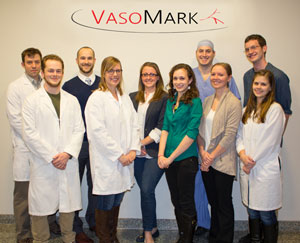
The VasoMark Team
A group of students from Neuroscience Graduate Program and Neurosurgery Residency Program have teamed up to compete
in the
National Institutes of Health
Neuro Startup Challenge
.
This new effort offers pre- and post-doctoral students from biomedical, legal, and business backgrounds the
opportunity to compete for licenses
to patented technologies from the NIH portfolio.
The teams model a business around the intellectual property, and seek startup funding from partnering angel investor and venture capitalist firms in order to bring the proposed technology to the biomedical marketplace. The NGP and Neurosurgery team, named VasoMark, selected two patents for the development of a minimally invasive diagnostic for the detection of primary and recurrent malignant brain tumors. VasoMark successfully completed Phase I of the competition, where they developed a two-minute elevator pitch and executive summary describing their intended entrepreneurial use of the selected technology. They are currently developing a business plan and live investor pitch describing their business model, intended market, and future areas of expansion for their selected patents.
Department Announces Fred Sherman Student Award
Friday, March 6, 2015
The Department of Biochemistry & Biophysics are very pleased to announce a new student award within the Biochemistry and Molecular Biology program, to be given at our annual Awards Ceremony in May.
The Fred Sherman Award will honor the memory of our former colleague, and will annually recognize a student in the BMB program who exemplifies the imagination, the excellence in the pursuit of scientific knowledge, and the commitment to the scientific community that were characteristic of Fred Sherman.
This award will compliment the William F. Neuman Award, given annually to a BSCB student to recognize academic, scientific and personal qualities which exemplify the imagination, enthusiasm and excellence in the pursuit of scientific knowledge which were characteristic of the life of Dr. William F. Neuman.
Anna Bird Awarded Pilot Project Grant
Thursday, March 5, 2015
Anna Bird, an IMV graduate student in the Anolik lab has been awarded pilot project grant through the Pilot Studies Program of the CTSI. Anna’s application entitled, “Neutrophils as a driver of inflammation in lupus bone marrow” was felt to be highly meritorious and received a priority score enabling her proposal to be funded.
Mini-symposium for Young Investigators in Memory of Dr. Robert Marquis to be Held March 10, 2015
Monday, March 2, 2015
Robert Marquis Mini-Symposium for Young Investigators
Tuesday, March 10, 2015
Hynes Convention Center, Boston, MA
About Robert Marquis
Dr. Robert E. Marquis, PhD, was chair of the Department of Microbiology and Immunology at the University of Rochester School of Medicine and Dentistry, and a beloved teacher to many students who trained at the medical school and at the university’s College of Arts and Sciences. He died in January 2014 at the age of 80. Originally from Ontario, Canada, “Bob” earned his M.S. and PhD degrees from the University of Michigan in Ann Arbor. He spent two years as a post-doctoral fellow at the University of Edinburgh in Scotland, where he studied under the guise of Peter Mitchell, a British biochemist who was awarded the 1978 Nobel Prize in Chemistry.
Bob began his career at the University of Rochester in 1963 as a senior instructor in Microbiology and was continuously funded by the National Institutes of Health until his retirement as a professor in 2012. During his early years at the medical school, he studied energy transduction – how cells and bacteria develop energy from food. From the 1970s until the end of his career he focused on oral streptococci, a type of bacteria present in the mouth that are major contributors to tooth decay. He had a secondary appointment in the Center for Oral Biology and his work on the effects of fluoride on cavity-producing bacteria earned him international recognition and the 2006 Distinguished Scientist Award for Research in Dental Caries from the International Association for Dental Research.
As passionate as Bob was about his research, he was equally, if not more passionate about the colleagues, trainees, and students he worked with every day. He influenced the lives of many graduate students who considered him to be a remarkable colleague, mentor and friend. It is not surprising then that many of Bob’s graduate students went on to assume distinguished careers in academia, industry, or public health service.
Bob's influence also included undergraduate students on the University of Rochester’s River Campus, where he was a founding director of the Undergraduate Program in Biology and Medicine. This program combines the College of Arts and Sciences and the School of Medicine and Dentistry to provide courses for undergraduate students with lectures, laboratory work, specialty seminars and research experiences. Bob helped start the program in the early 1980’s and it led to the creation of the Bachelor’s of Science degrees in Biological Sciences, which includes tracks in Biochemistry, Cell and Developmental Biology, Ecology and Evolutionary Biology, Microbiology, Molecular Genetics, and Neuroscience. Thanks to Bob’s work, the program is a major conduit for undergraduate students into research labs at the medical school.
Outside of the University, Bob loved the Rochester Philharmonic Orchestra and was a huge fan of theater, traveling annually to the Shaw Festival in Niagara-on-the-Lake and the Shakespeare Festival in Stratford, Ontario. He was also known to fly to London with his wife on a regular basis to catch plays in London’s West End. Another hobby was custom brewing, an art that he shared and passed on to many.
Purpose
This mini-symposium honors the memory of the late Robert E. Marquis and the knowledge he eagerly shared with students, trainees and early career faculty members. Its main objective is to promote information exchange among scientists who engage in oral microbiology and immunology research and clinical studies pertaining to oral health and disease, and to provide a forum through which new investigators entering the field can network with established investigators and so create contacts that can help nurture their research progress and productivity.
Scientific Program
8:00 am Continental Breakfast and Sign-in
8:30 am Dr. Robert Quivey, PhD, Professor and Director, Center for Oral Biology, University of Rochester School of Medicine and Dentistry, Rochester, NY
“Well actually……, 40 years of bacterial physiology, from the late Robert E. Marquis.”
9:00 am Alejandro Aviles-Reyes, PhD candidate, (2015 recipient of the Arnold Bleiweis Travel Grant), University of Rochester School of Medicine and Dentistry, Rochester, NY
“S. mutans modification of Cnm by a novel glycolytic pathway”
9:25 am Dr. Roger M. Arce, DDS, MS, PhD, Assistant Professor, Dept. of Periodontics, College of Dental Medicine, Georgia Regents University, Augusta, GA
“Exploring the in-vivo effects of pathogen-differentiated dendritic cells”
9:50 am Dr. Lauren Mashburn Warren, PhD Senior Research Scientist, Center for Microbial Pathogenesis, The Research Institute at Nationwide Children’s Hospital, Columbus, OH
“A novel approach to target the removal of caries-causing bacteria.”
10:15 am Dr. Octavio Gonzalez, DDS, MS, PhD, Assistant Professor, Center for Oral Health Research, College of Dentistry, University of Kentucky, Lexington, KY “Adult and aged periodontitis: Two clinically similar but molecularly different lesions.”
10:40 am Dr. Peng Zhou, PhD, Associate Research Scientist, Department of Microbiology and Immunology, University of Oklahoma Health Science Center, Oklahoma City, OK
“Role of veillonellae catalase in oral biofilm ecology”
11:05 am Dr. Brendaliz Santiago, PhD, Post-doctoral fellow, Center for Oral Biology, University of Rochester School of Medicine and Dentistry, Rochester, NY
“Amino acid metabolism: Acid adaptation and transcriptional regulation in S. mutans.”
11:30 am Natasha Singh, DDS candidate, University of Toronto Faculty of Dentistry, Toronto, Ontario, CANADA
“Development of a novel surveillance method to monitor bacterial biomarkers under chronic periodontitis.”
11:55 am Yun-ji Kim, Master’s candidate, School of Dentistry, Department of Oral Microbiology and Immunology, Seoul National University, Seoul, Republic of Korea
“Dysbiosis of oral microbiota in recurrent aphthous ulcers.”
12:20 pm Dr. Jessica Kajfasz, Postdoctoral Associate, Center for Oral Biology, University of Rochester School of Medicine and Dentistry, Rochester, NY
“Transcription of oxidative stress genes is directly activated by SpxA proteins of Streptococcus mutans.”
12:45–1:15pm: Lunch and Discussion
1:20 pm Stephen Kasper, PhD candidate, (2015 recipient of the Susan Kinder Haake Award) SUNY College of Nanoscale Science and Engineering, University of Albany, Albany, NY
“Natural product-based nanocapsules for sustained delivery of anti-biofilm agents”
1:45 pm Josefine Hirschfeld, DMD, Periodontology Resident/Research Associate, University Hospital Bonn, Bonn, Germany
“Role of macrophage migration inhibitory factor in periodontal tissue destruction.”
2:10 pm Christina Sim, PhD candidate, National Dental Centre of Singapore, Singapore
“Development of an in vitro polymicrobial biofilm model of dental caries.”
2:35 pm Keum Jin Baek, Master’s candidate, School of Dentistry, Department of Oral Microbiology and Immunology, Seoul National University, Seoul, Republic of Korea
“Association of the invasion ability of Porphyromonas gingivalis with the severity of periodontitis”
3:00 pm Dr. Zhimin Feng, Senior Instructor, Case Western Reserve School of Dental Medicine, Cleveland, OH
“Further studies of Acinetobacter baumannii interaction with human oral epithelial cells: Invasive capacity and induction of hBD3.”
3:25–3:35pm Coffee/Refreshment Break
3:35 pm Dr. Samta Jain, PhD, Postdoctoral Associate, Boston University Department of Medicine, Boston, MA
“Trafficking of Porphyromonas gingivalis virulence factor Kgp to human endothelial cells.”
4:00 pm Dr. Kenneth Barth, PhD, Postdoctoral Associate, Boston University Department of Medicine, Boston, MA
“Porphyromonas gingivalis gingipain-mediated modification of cellular kinases impairs host innate immune signaling.”
4:25 pm Dr. Carolyn Kramer, Postdoctoral Associate, Boston University Department of Medicine, Boston, MA
“The Oral Microbiome in Patients with Oral Cancers.”
4:50 pm Dr. George Papadopolous, PhD candidate, Boston University Department of Medicine, Boston, MA
“Pathogen-induced Th17 cells link oral infection with systemic inflammation.”
5:15 pm Concluding Remarks
E-Cigarette Vapors, Flavorings, Trigger Lung Cell Stress
Wednesday, February 11, 2015
Do electronic cigarettes help people quit smoking? As the debate continues on that point, a new University of Rochester study suggests that e-cigarettes are likely a toxic replacement for tobacco products.
Emissions from e-cigarette aerosols and flavorings damage lung cells by creating harmful free radicals and inflammation in lung tissue, according to the UR study published in the journal PLOS ONE. Irfan Rahman, Ph.D., professor of Environmental Medicine at the UR School of Medicine and Dentistry, led the research, which adds to a growing body of scientific data that points to dangers of e-cigarettes and vaping.
Please view the NBC news video about this article.
E-cigarette Vapors Can Damage Lung Cells
Monday, February 9, 2015
A new study by University of Rochester suggests that e-cigarettes are likely to be a toxic replacement for tobacco products.
Emissions from e-cigarette aerosols and flavourings damage lung cells by creating harmful free radicals and inflammation in lung tissue. Several leading medical groups, organizations and scientists are concerned about the lack of restrictions and regulations for e-cigarettes,
said Irfan Rahman, lead author and professor of environmental medicine at University of Rochester Medical Center.
MSTP Announces 40th Anniversary Celebration!
Sunday, February 1, 2015

Edward M. Eddy
Rubin
The Medical Scientist Training Program (MSTP) is excited to announce a celebration of the 40th anniversary of the MSTP NIH training grant on Friday, October 9, 2015.
The keynote speaker will be an MSTP alumni from the Class of 1980: Edward Rubin, MD, PhD, Director, DOE Joint Genome Institute.
Edward M. Eddy
Rubin is an internationally-known geneticist and medical researcher at the Lawrence Berkeley National Laboratory in Berkeley, California, where he became head of the Genomic Sciences Division in 1998. In 2002 he assumed the directorship of the DOE Joint Genome Institute (JGI) to lead the JGI's involvement in the Human Genome Project (HGP).
For more information and schedule of events for the day, please visit the MSTP 40th Anniversary page.
Alejandro Avilés Reyes Receives 2015 Arnold Bleiweis Travel Award
Friday, January 30, 2015
Alejandro Avilés Reyes, a graduate student in the Lemos Lab and lab of Jacqueline Abranches, Ph.D., has been selected for the 2015 Arnold Bleiweis Travel Award, to present his work entitled "Modification of Streptococcus mutans Cnm by a novel glycosylation pathway". Mr. Avilés Reyes will give his presentation during the upcoming General Session of the International Association for Dental Research Conference, to be held March 10-14, 2015 in Boston, MA, as part of the first Robert Marquis Mini-Symposium for Young Investigators in Microbiology and Immunology.
Alejandro is currently working on the characterization of Cnm, a collagen-binding protein produced by invasive Streptococcus mutans. The Lemos-Abranches lab focuses on characterization of the stress-response mechanisms of Gram-positive bacteria and their contribution to virulence and disease.
Congratulations to Fatima Rivera-Escalera
Sunday, January 25, 2015

Fatima Rivera-Escalera
Congrats to Fatima Rivera-Escalera, a fifth-year student in the Olschowka Lab who was awarded a Keystone Symposia Scholarship to attend the Keystone Symposium on Neuroinflammation in Diseases of the Central Nervous System in Taos, NM from January 25-30th, 2015.
UR Tests HIV Vaccine Pill
Tuesday, January 13, 2015
Researchers at the University of Rochester Medical Center are testing a new oral vaccine to prevent infection with HIV, the virus that causes AIDS. The vaccine is unique because it is given as a pill, unlike most HIV vaccines tested to date that have been given as shots
The study is funded and designed by Beth Israel Deaconess Medical Center (BIDMC), which received support for a Collaboration for AIDS Vaccine Discovery grant from the Bill & Melinda Gates Foundation. The URMC team and BIDMC are collaborating with the International AIDS Vaccine Initiative, which is helping to organize the study through its Vaccine Product Development Center to provide services to BIDMC grantees. This is one of the first studies to benefit from this partnership and URMC is the only center in the world testing this vaccine.
NIH Neuro Start Up Challenge
Monday, January 12, 2015
Several neuroscience graduate students and clinicians from the University of Rochester are involved in the NIH Neuro Start Up Challenge and have developed their elevator pitch and executive summary as part of the public voting phase. We encourage the neuroscience community to visit their Showcase page and provide votes and constructive feedback on the discussion board this week. Public voting will run Monday, January 12th through Friday, January 16th.
Team: University of Rochester- 8&9.A (Inventions 8 and 9)
Company Name: VasoMark
About the Challenge: The Neuro Start Up Challenge, launched by the NIH in partnership with the CAI and HPN, is designed to bring brain-related, patented technologies from the NIH to market. Teams of medical, scientific and business experts compete in several phases to create a company and execute a business plan with the ultimate goal of launching their start-up.
Thank you for your support
New Study Probes Link Between HIV Drugs and Vascular Disease
Monday, January 5, 2015
A new $3.8 million grant will bring together clinical and bench researchers to better understand why individuals who receive anti-retroviral treatment for HIV are at greater risk for heart disease and stroke.
“The good news is that the drugs being used to fight HIV are increasing life expectancy to normal levels,” said University of Rochester neurologist Giovanni Schifitto, M.D., one of the co-leaders of the study. “However, one of the long-term complications is that these treatments, the infection itself, or a combination of the two are increasing risk for cardiovascular and cerebrovascular disease in this population.”